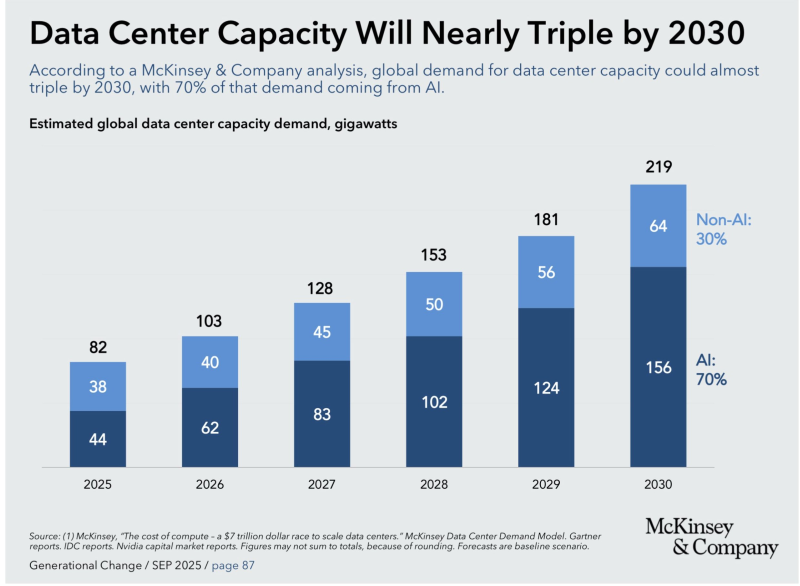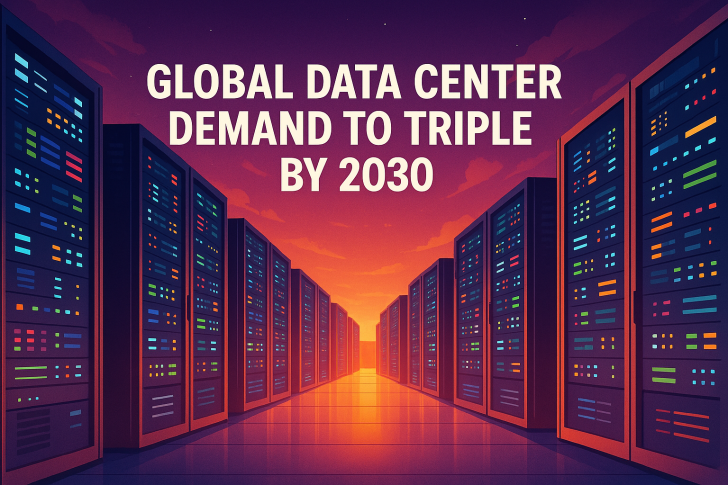⬤ New McKinsey research reveals that global data center capacity is set to almost triple by 2030, jumping from 82 gigawatts today to 219 gigawatts—one of the fastest energy demand surges in modern industrial history. This explosive growth reflects how AI is fundamentally reshaping digital infrastructure worldwide.

⬤ McKinsey's Data Center Demand Model shows that roughly 70% of this expansion will be driven by AI computing as companies and cloud providers rush to deploy advanced machine learning systems. AI data center demand is projected to skyrocket from 44 GW in 2025 to 156 GW by 2030, while traditional workloads will grow more modestly from 38 GW to 64 GW.
⬤ The firm describes this as a "$7 trillion race to scale data centers," but warns the rapid AI expansion could stress power grids, supply chains, and climate commitments. Meeting this demand sustainably will require major breakthroughs in renewable energy, cooling technology, and grid efficiency.
⬤ The ripple effects are already visible across industries. Tech giants like Microsoft, Amazon, and Google are rapidly expanding AI-focused facilities, while chip makers including Nvidia, AMD, and Intel are positioned to capitalize on surging demand for the high-performance processors that power AI training and operations.
⬤ The data confirms what many have suspected: AI is becoming the dominant force shaping next-generation computing infrastructure. By 2030, the majority of new data center capacity won't just be storing data—it'll be actively thinking, learning, and processing in ways that fundamentally change how we interact with technology.
 Eseandre Mordi
Eseandre Mordi

 Eseandre Mordi
Eseandre Mordi


